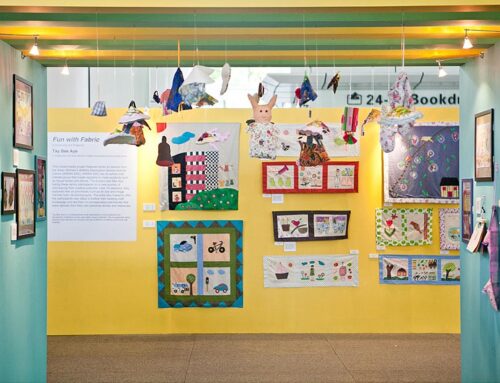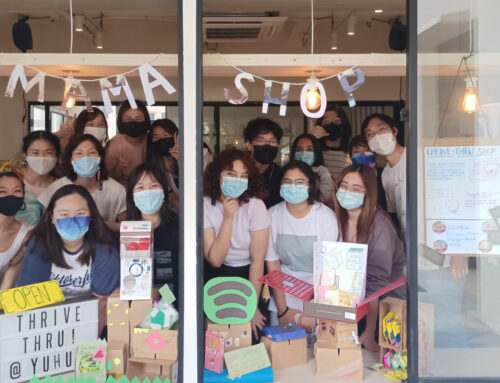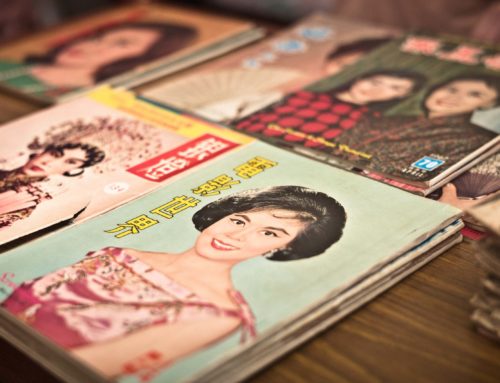Library / Field Studies
The Adventures and Personal Manifesto of a Socially Engaged Art Practitioner
Library / Field Studies
The Adventures and Personal Manifesto of a Socially Engaged Art Practitioner
Pre-Covid-19, socially engaged artist and interdisciplinary practitioner Fié Neo was journeying across Europe and America. This was a journey of discovery for herself: to learn what arts practised on the ground truly meant, beyond the theory she had learnt in university. Through this journey, she started and contributed to projects driven by important causes, and started a network of socially engaged practitioners who could learn from one another. Back in Singapore now, Fié has many reflections on what she has learnt in her travels: both the beauty and the hard parts of working in, and with communities and wider systems. Having continued her work here, she has valuable insights to share on how socially engaged art practice could be sustained and supported, for it to flourish.
Get to know Fié, her work and reflections in this interview.
Who is Fié? How would you define yourself and your work?
I’m an interdisciplinary, socially engaged artist and wanderer. I work with many media, including film, performance, wearable art and participatory installations. At the core of my practice is the belief that art can create social change. My journey in pursuit of a sustainable way for socially engaged arts to thrive brought me from Singapore to the UK, and France to Canada. Dotting these places are experiences working with topics like homelessness, the refugee crisis, racism, mental health, the climate crisis.
Tally is a wearable art piece that I wore to many festivals, including Edinburgh Fringe Festival (first image) and Venice Biennale (second image). There were happy and sad pockets for people to share their memories. It was an attempt to create deeper and more genuine exchanges in festivals where strangers who frequent the same places rarely connect with one another.
How did your journey in the arts begin?
At seventeen, I learned about Social Realism during one of my ‘A’ levels subjects, Study of Visual Arts, and was touched by Duane Hanson’s hyperrealistic sculptures that reflected the socio-economic conditions of workers. I dreamed of a world that would be more empathetic and engaged in the pursuit of equality. This made me realise I wanted to create wearable art pieces that reflect social issues and have people engage with them when worn out on the streets. Naively, I thought that this would change the world.
When I was twenty, studying as an undergraduate in London, I created wearable art and wore it out to the streets. Many people took photos and selfies, but not that many started or carried conversations with me on the topics I wanted to address. I realised that change requires more than just an attractive piece of art. I learned that social action is a process that requires more long-term engagement to transform awareness into action.

Toby Time (2016), a participatory art project that allowed people to enter Toby (the pink tent) and have some personal space to write out their happy or sad memories. Sad memories go into the bad memory eraser box and everyone gets to pick a happy memory from the happy box.
Tell us about International Network for Socially Engaged Practitioners (INSEP) and what inspired you to start it.
When I started writing my dissertation on art and change, I learned about relational aesthetics, Augusto Boal’s forum theatre and the many participatory ways in which the arts help to mediate, heal and empower. Shortly before graduating, I realised there was no career path for me to follow as a socially engaged artist. There were no jobs to apply for, just many arts funding opportunities I had to write proposals for, yet was unlikely to get. I wanted to learn about the ethics of engagement, financial sustainability, how to create safe spaces, how to evaluate and scale impact… However, the books I read were written by academics who hadn’t produced or even experienced the work themselves.
#Occupy was an immersive performance at Royal Albert Hall in 2016. Building on the premise that “if all the paintings in the Prince of Wales room were sold, people wouldn’t be homeless”, we ‘occupied’ the VIP room and invited the audience to talk to us about different social and political issues.
Hence, I started reaching out to people who were interested in or actively doing this work. Through a European project I participated in, I had access to a network of practitioners approaching this field from visual arts, performance, architecture, urban design, and film. I was excited and inspired. That year I started INSEP (International Network for Socially Engaged Practitioners).
After I graduated, I sought to expand INSEP’s network. To do so, I began talking to people in tech who were critical about digital cultures and questioning the future of the internet. Activists. Participatory art festival organisers. The big dream was that if I could build a bottom-up network through which community builders from many different localities could connect, exchange and learn from one another, we could scale social movement and actions by activating our communities.
Through INSEP, I began documenting case studies and discussions on our website. There was a desire to do more: I wanted to map out where all the interesting works and people were, and create physical gatherings for such learning and exchange. To do this, I was organising online gatherings and peer learning sessions. However, I had no funding and soon burned out.
It was too much work, and I was juggling several part-time jobs. By chance, through a contact in the network, I got in touch with the director of an NGO in France. I contemplated if there was a possibility to build stronger connections between NGOs that are skilled at writing funding applications and settling the bureaucracy, and between socially engaged artists who have the skills to engage people on the ground. With a stroke of luck, I got a visa and worked in that NGO in France for a year.

La Quiche Tour (2019) was co-designed with Fabrice, who is homeless, to share his story with the city of Marseille.
Please share more about your experiences overseas working with communities.
By the time I was twenty-four, I was deeply engaged in the French social and solidarity communities. I was working with climate activists, refugees, youth volunteers, and homeless people, and travelled to places like North Macedonia and Latvia for European projects on youth engagement. I learned that context matters–which country, what culture, what kind of bureaucracy, what funding is available, where the money is coming from, what social-political-economic context… There is no one-size-fits-all and time is needed to understand the context in order to find your position to act and sustain your change-making efforts. Unfortunately, it was too difficult as a foreigner to work in the social sector. I didn’t have the right passport to set up a non-profit and access European funding. A year of working with NGOs mostly sustained by European commission funding also made me eager to discover novel ways of sustaining change-making work. Hence, I started looking at social change agencies based in North America.

Sally at Battersea Arts Centre was a social experiment to gauge the acceptance of refugees in London (2017).
Just as Covid-19 engulfed Europe, I arrived in New York. And two weeks after my bus trip to Canada, the American-Canadian border closed. That was not a good time to be a traveller. I was fortunate enough to have found hosts and ended up volunteering at different organic farms and homesteads. While enjoying countryside life, I learned about restorative and regenerative agriculture. This made me realise the busy city life, all we have ever known in Singapore, is not the only way to live. In between gardening and farming work, I started my podcast Onions Talk.
What are your reflections on socially engaged work and art through all these experiences practising in different countries?
Socially engaged art makes little sense in our current market system. Many socially engaged artists I connected with juggle several jobs just to fund the art projects they are doing with their local communities. Burnout is almost inevitable. This way of living–having a job that pays the bills while shouldering the work of being a project manager, facilitator, communications officer and fundraiser for the community engaged project–is completely unsustainable.

Generations (2018) was an improvised theatre project with seniors from Claremont Projects in London.
However, the positive impact of building communities is evident. The power of the arts can be found in facilitating difficult conversations, mediating conflicts, and utilising collective intelligence to learn, exchange and heal together. This is critical and important work for civic societies. We are the connectors and glue of communities. But who pays for the positive externalities?
Originally, I thought the answer to this question would be about shifting value and consumer habits, which made me research post-capitalist futures and alternative economies. This much is clear to me: we need systemic change. But how do we do it?
There is something about the way we understand, connect and shape the world that I believe would be critical to that shift. If we are going to have super rational minds build the system we live in, then the elderly don’t matter (not much economic value); community-building matters only where it can cut public health care costs; and childcare matters because parents can then work harder and longer hours to increase the country’s GDP. This is the narrative we have been drilling into ourselves–doesn’t it sound alienating? We have the hardware but not the ‘heartware’.1
What do we live for? What are our values? What is success for us ? Socially engaged processes hold a key to connecting with our social heartware. We want more empathetic and supportive communities. Be it the climate crisis or this global pandemic, what will tide us through crises to come is how strong citizens’ support networks are.2
We need real genuine relationships, and that cannot be automated.

Poster for Insect Protein Pals event, a socially engaged art and sustainable enterprises collaboration to pilot how art can help scale climate solutions.
What are your hopes for the future of this field?
I see myself as a critical optimist. Macro ideas on systemic change can seem too overwhelming and unattainable. Here are some concrete points–a personal manifesto–that I believe are necessary steps to building the socially engaged arts sector in Singapore.
1. The capacity building of socially engaged artists
Training for more artists to understand what social and community engagement is. Necessary skills to learn are project management and evaluation, community engagement (ethics and safety), project producing and know-how to build cross-sector collaborations, and self-care.
Good to know: Theories of change (to understanding processes of change and how to incorporate that into their individual practice so that they have their own methodology for impact), business management, and understanding the local ecosystem (funding structures, how public institutions work).
2. Advocacy and visibility
We need more visibility and to build up a stronger understanding of what socially engaged art is in society. It is not simply paintings and sculptures. This means more conversations in our circles and with people outside our sector, doing more projects, sharing the process and the impact. We need to build up this sector collectively and strategically. It is too much work to fall on the shoulders of a few individuals, and a paradigm shift won’t happen until we have enough in force. Here, I propose some ways to do this:
- Academic funding for more focused writing in this sector to build up the vocabulary and visibility of this sector.
- Conversations with policy makers to build awareness on a national level and lobby for systemic support of this sector. We could do this through social innovation. (This is tough and long-term work; someone in the sector might need to be part of the country’s public innovation team.)
- More programs, projects and speaking engagements so that this work becomes understood mainstream.
3. More paid and cross-sector work
Art alone will not bring more money into this sector. Without money, socially engaged artists won’t have the stability to build up their practice and the impact they can deliver. We have many social needs, in health care, in emotional care–we need to find creative ways to solve problems. We need more translators who can communicate across sectors and produce projects.
4. Recognising socially engaged arts as a social service
This would include measures such as having socially engaged artists hired at professional rates.
5. Availability of incubation programs and social financing to support new entrants
If jobs are not yet available in this space and need to be created, there needs to be systemic support for practitioners to learn the business side of things and funding for them to take off and eventually scale. Every part of the process needs to be adequately supported.
6. A stronger and more connected, change-making ecosystem
In INSEP, I use the word ‘practitioners’ instead of ‘artists’ as there are many similarities among different actors in different spaces doing socially engaged work. We have a lot to learn from each other across sectors (eg. horizontal organisation in civic tech, participatory democracy practices in civic organisations, theories of change from philanthropy and research). Our work is not an individual practice that is siloed. We function in relation to the ecosystem in society, which means the more connections we build across sectors, the more we learn how best to maximise impact. The stronger the web of our social capital, the easier it would be to have projects delivered and to enact change more quickly. What would aid this would be the transparency of and good communication with public institutions.
These steps might be a big ask and it is definitely not a one-person job. But I believe in the power of autonomy and movements. We are never too ambitious–it is about the actionable steps you can break down to get to where your ideal state is. When you have the steps, it is dogged determination and commitment that will bridge the gaps.
[1] Human-centred ways of working and acting from the heart. A way of rethinking why we work and the role we play as active citizens in society.
[2] More about community builders as the key to climate salvation.
Cover Image: Sally is a wearable art intervention. Memories of refugees and volunteers were pasted on Sally to join the refugee march in London (2016).
All images and links provided by Fié Neo.
About Fié Neo

Fié is an interdisciplinary artist who makes socially engaged works through participatory public interventions, wearable art, film, and performance. She also designs costumes, sets and immersive experiences. In 2017, she set up INSEP (International Network for Socially Engaged Practitioners) which brings together people around the world in the field of socially engaged practice to connect and share their learning. Fié has performed and shown her works at Royal Albert Hall, Edinburgh Fringe Festival, London Design Festival, Gillman Barracks and others. She also hosts a podcast called Onions Talk on hope and change-making.
Connect with Fié via:











